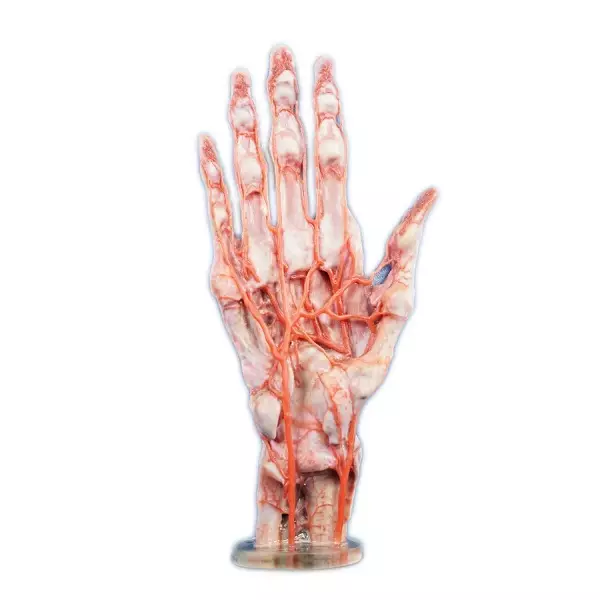DIGIHUMAN’s advanced 3D printing technology has revolutionized the way anatomical structures are studied. By using high-precision digital data, DIGIHUMAN creates realistic 3D printing anatomy models that help medical students, professionals, and researchers visualize and understand human anatomy in ways that traditional methods cannot.
Realistic Reproduction of Hand Arteries Using Digital Data
One of the standout features of DIGIHUMAN’s models is the highly accurate reproduction of complex structures, such as the hand artery system. Printed with hard materials, these 3D printing anatomy models perfectly replicate the branching and intricate structure of small blood vessels, offering a level of detail that is unmatched by standard anatomical specimens. The data used to create these models comes from precise 3D scanning of real human cadaveric specimens, ensuring a true-to-life representation.
Enhancing Anatomy Education with Accurate 3D Models
The use of 3D printing anatomy models in education has opened up new possibilities for teaching. DIGIHUMAN’s models provide a tangible, physical copy of human anatomy that enhances the learning experience. By offering a realistic and detailed view of structures like blood vessels, muscles, and bones, these models allow for more interactive and effective study sessions. Students and professionals can explore these models from all angles, helping to deepen their understanding of human anatomy.
Conclusion
DIGIHUMAN‘s cutting-edge 3D printing technology is redefining the way anatomy is taught and learned. By delivering high-precision, realistic anatomical models, DIGIHUMAN makes studying the human body more interactive and accessible. These models not only provide a visual and tactile experience but also empower students and professionals to engage with human anatomy in a more meaningful way, contributing to more effective and immersive educational experiences.


